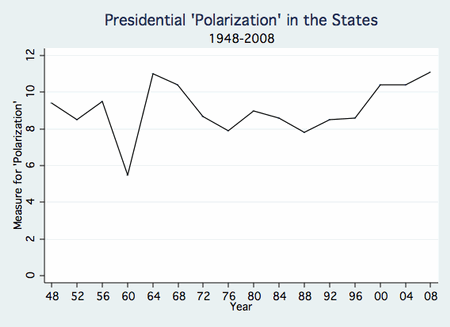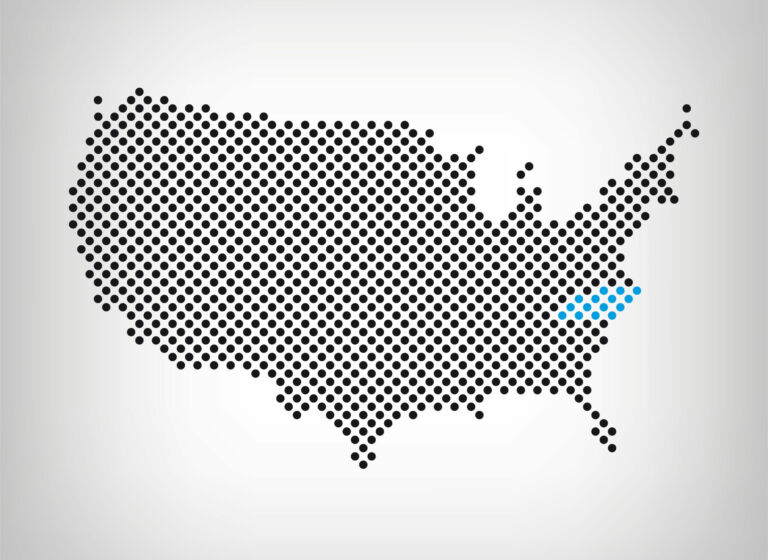Anyone who remembers the 2000 and 2004 presidential elections knows political polarization was evident in American politics long before Barack Obama entered the White House. Those who remember the 2008 election know Obama pledged to be a “uniter,” rather than a divider.
The Weekly Standard‘s Jay Cost examines Obama’s record.
To begin, Obama’s election in 2008 was decided by a very polarized electorate. To appreciate this, consider the following graph, which tracks the standard deviation around the statewide average of presidential vote. (The standard deviation is simply a measure of the variation around the average, so it points to what we are interested in: the greater the variation, the greater the differences between the states, and thus greater polarization. When we do this for every election in the postwar era, we can get a good sense of where 2008 stacks up.)
Clearly, polarization has been up substantially from 2000 through 2008, which is really an indication that the red states are getting redder and the blue states bluer.
It is unfair to blame Obama very much for this, but immediately after becoming president, he began exacerbating these divisions for his own political gain. Remember this, just days after he was sworn in?
President Obama warned Republicans on Capitol Hill today that they need to quit listening to radio king Rush Limbaugh if they want to get along with Democrats and the new administration.
“You can’t just listen to Rush Limbaugh and get things done,” he told top GOP leaders, whom he had invited to the White House to discuss his nearly $1 trillion stimulus package.
At the time, many conservatives who genuinely wished Obama well, like Ed Morrissey (and myself), cried foul on this kind of strategy, arguing that it was inconsistent with the pledge of the Obama campaign. But it was really just the beginning of a systematic effort by the president to misrepresent the views of his opponents, to question their motivations, and thus to win over the unaffiliated vote in the middle of the country. He first employed this strategy with the battle over the stimulus and continues using it all the way through today.



